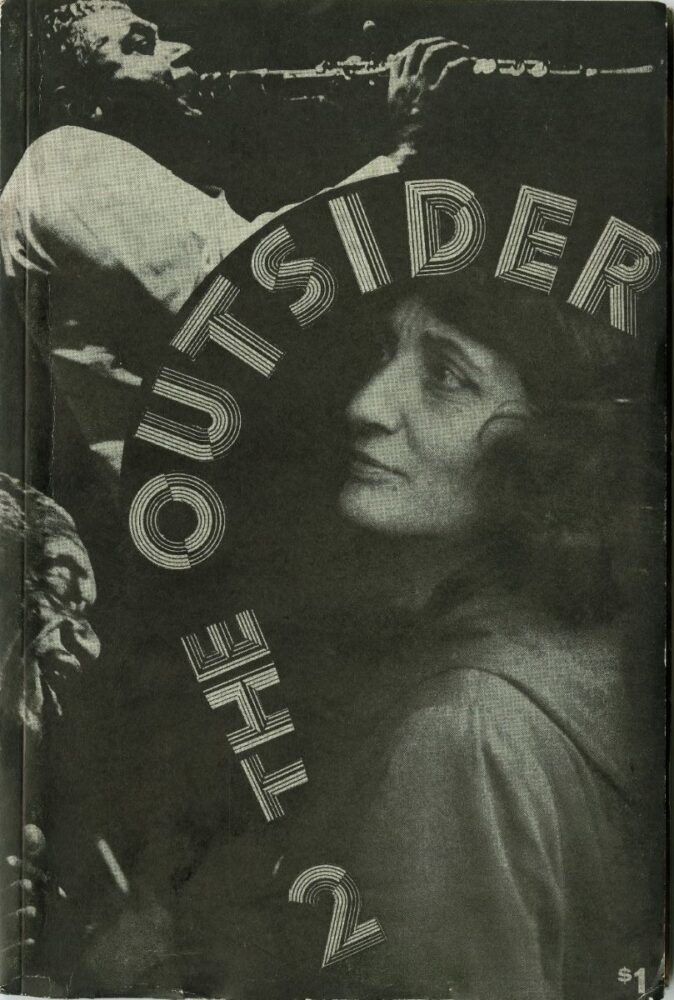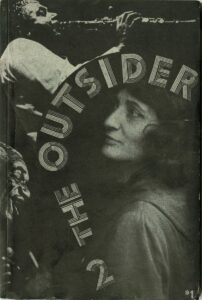Loujon Press
Loujon Press was an avant-garde operation in 1960's New Orleans that was a pioneer of high-quality, independent publishing.

The Historic New Orleans Collection
The Outsider, volume 1, number 2.
Loujon Press was an avant-garde publisher operating during the 1960s in New Orleans. A pioneer of high-quality, independent publishing, Loujon Press was instrumental in launching and supporting the careers of literary icons Lawrence Ferlinghetti, Langston Hughes, Diane di Prima, Jack Kerouac, Allen Ginsberg, Robert Creeley, LeRoi Jones (now known as Amiri Baraka), and William S. Burroughs, among many others. Combining art, prose, and poetry and using a labor-intensive, old-fashioned letter press, Jon and Louise “Gypsy Lou” Webb published the now-famous literary journal The Outsider as well as books by Charles Bukowski and Henry Miller.
The Outsiders
Jon Webb and Gypsy Lou met in Cleveland, Ohio, where Webb was trying to dodge a checkered past, including an alcoholic wife and a three-year stint in jail after a botched jewel heist. Gypsy Lou was a free spirit in search of adventure. With only seventeen dollars between them, in 1940 they hopped a southbound bus and eloped to New Orleans. By 1960 they had become central figures among the bohemian artists, outcasts, and transplants who had gravitated to the thriving counterculture of the French Quarter. As Mark Cave, senior curator at The Historic New Orleans Collection, has noted, “The Webbs were following in the footsteps of a long line of restless and creative people who perhaps found themselves out of place in their own time, but found acceptance and inspiration living in New Orleans.”
Here, Jon Webb decided to employ his writing and editing skills in a grand new adventure: Loujon Press. Webb wanted to take independent publishing in a whole new direction from the conservative publications of the day, and he was none too subtle in his disdain for play-it-safe editors whom he thought were ignoring the freshest and most interesting new writing. “Little mag editors afraid to ‘let go’ in any creative direction they wish to, afraid to denounce anything they believe needs denouncing, who go on publishing the same old cliché rot of the academy they sprang from (playing safe and decent) ought to be lined up and shot—into immediate obscurity,” Webb wrote.
Looking to provide an outlet for this new, edgy literature that was emerging from New Orleans and similar underground scenes in such places as Greenwich Village and Hollywood, Webb created a journal the likes of which had never been seen before. Hand-set, hand-cut, hand-published, hand-sewn, and even hand-decorated, the journal straddled the line between traditional books and modern works of art. Webb promoted the press and its writers tirelessly, so despite the extremely low budget and small runs, the journal made an outsized impact on the literary world, shining a light on the talents of Beat, bohemian, and other counterculture writers and artists of the day. As art writer Nathan Martin commented, “Loujon operated during a particular moment in the history of artistic publishing in America … and remains a distinctive and compelling entity at the intersection of fine-press publishing, counterculture literature, and the French Quarter from which it emerged.”
Literary Triumph
The Outsider was a critical success almost from the very start, making a remarkable impact in the literary landscape of the twentieth century and helping to usher in a whole new style and energy of modern writing. Although it never earned the Webbs much by the way of income, it earned a great deal of respect. Soon Loujon Press took another gamble and began work on a manuscript of poetry from an almost entirely unknown poet, Charles Bukowski, who would go on to become one of century’s most notorious literary figures and one of the most read and recognizable poets in American letters. Webb formed a close relationship with the oft-drunk and oft-reclusive poet, and the tiny team at Loujon toiled over Bukowski’s manuscript, creating from it another work of art. Bukowski’s first published book, It Catches My Heart in Its Hands, was published in 1963. They published Bukowski’s next volume, Crucifix in a Deathhand, in 1965. As New Orleans arts writer Doug MacCash observed, “The small, cash-starved press was an inky crossroads that brought together a failed jewel thief, a devoted Vieux Carré street artist, an out-of-place oil company employee, and a famously drunken poet in a modern literary triumph.”
By then Loujon Press had earned such notoriety among the champions of underground literature that Henry Miller agreed to work with them on publication of two of his books, Order & Chaos and Insomnia or the Devil at Large, in 1966 and 1970, respectively. In all, the press published three issues of The Outsider, one double issue of The Outsider, and four volumes of prose and poetry. It seems like a small catalogue, but the remarkable artistry, craftsmanship, and pioneering spirit have earned the press a much larger place in history.
In 1971, when Jon Webb died in Nashville, Tennessee, Loujon Press died with him. Gypsy Lou continued to live in the French Quarter, where she frequently sold paintings on Jackson Square. She befriended fellow artist Noel Rockmore and appears in his painting Homage to the French Quarter, depicting French Quarter bohemians of the mid-twentieth century. In 1984 she moved to Slidell to live with her sister.
